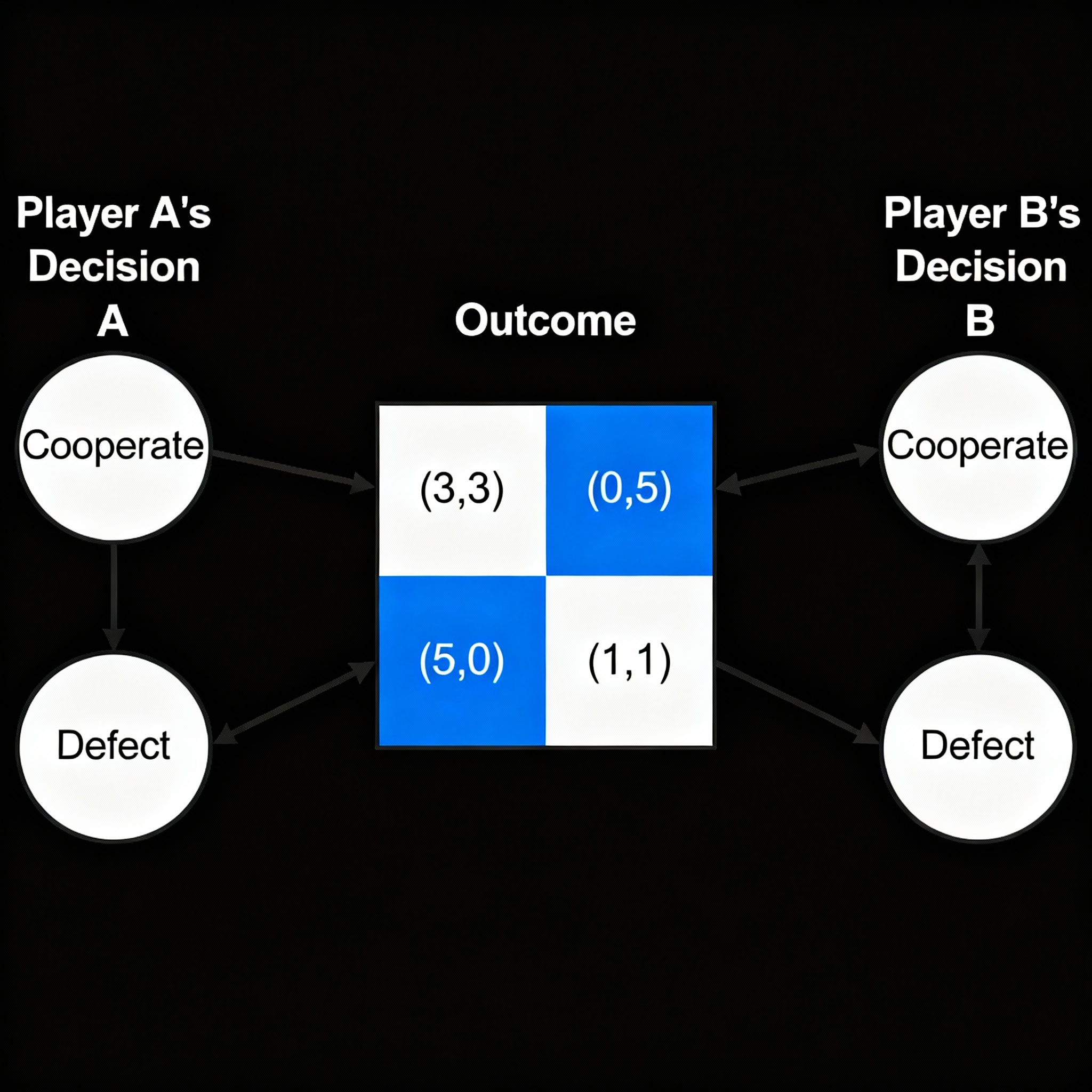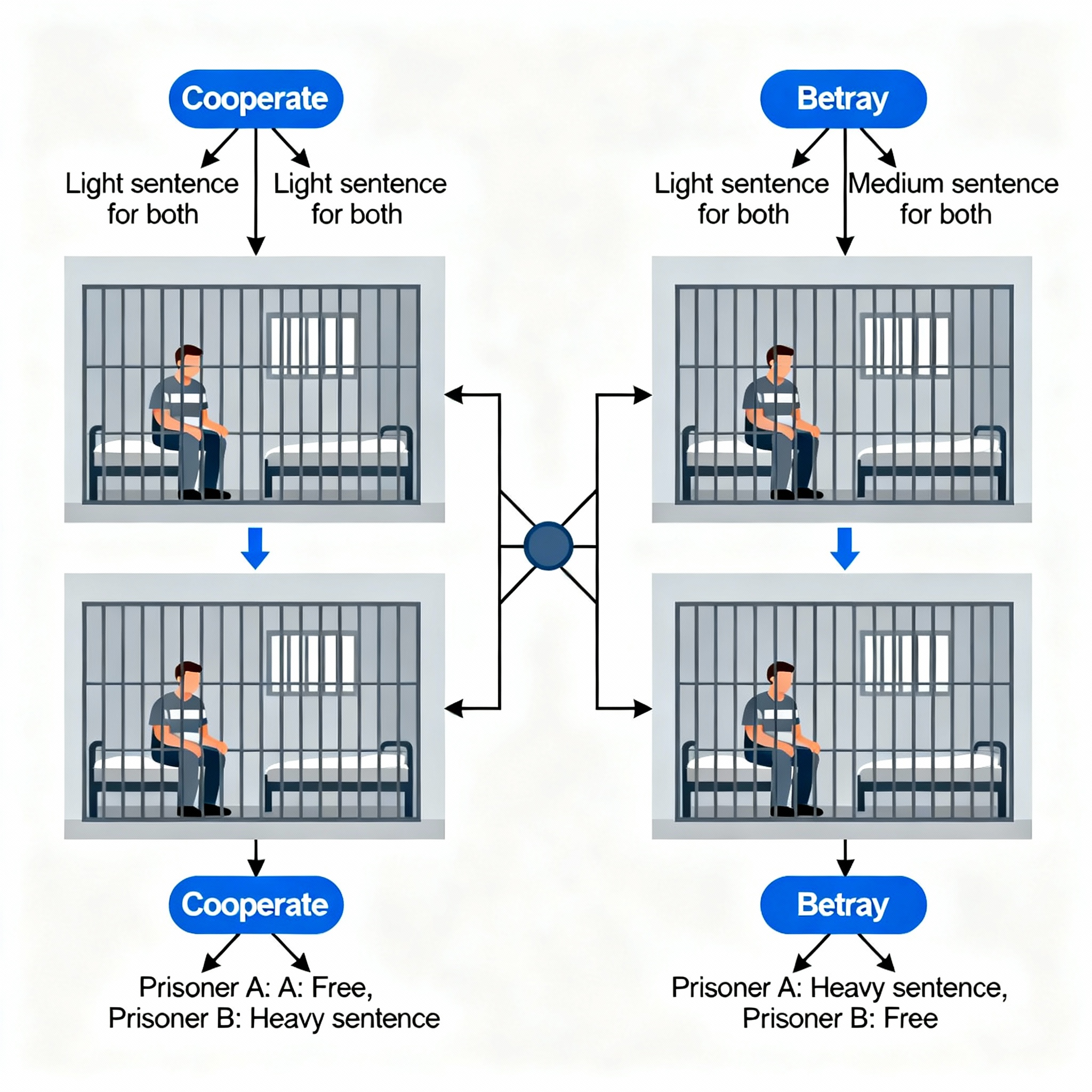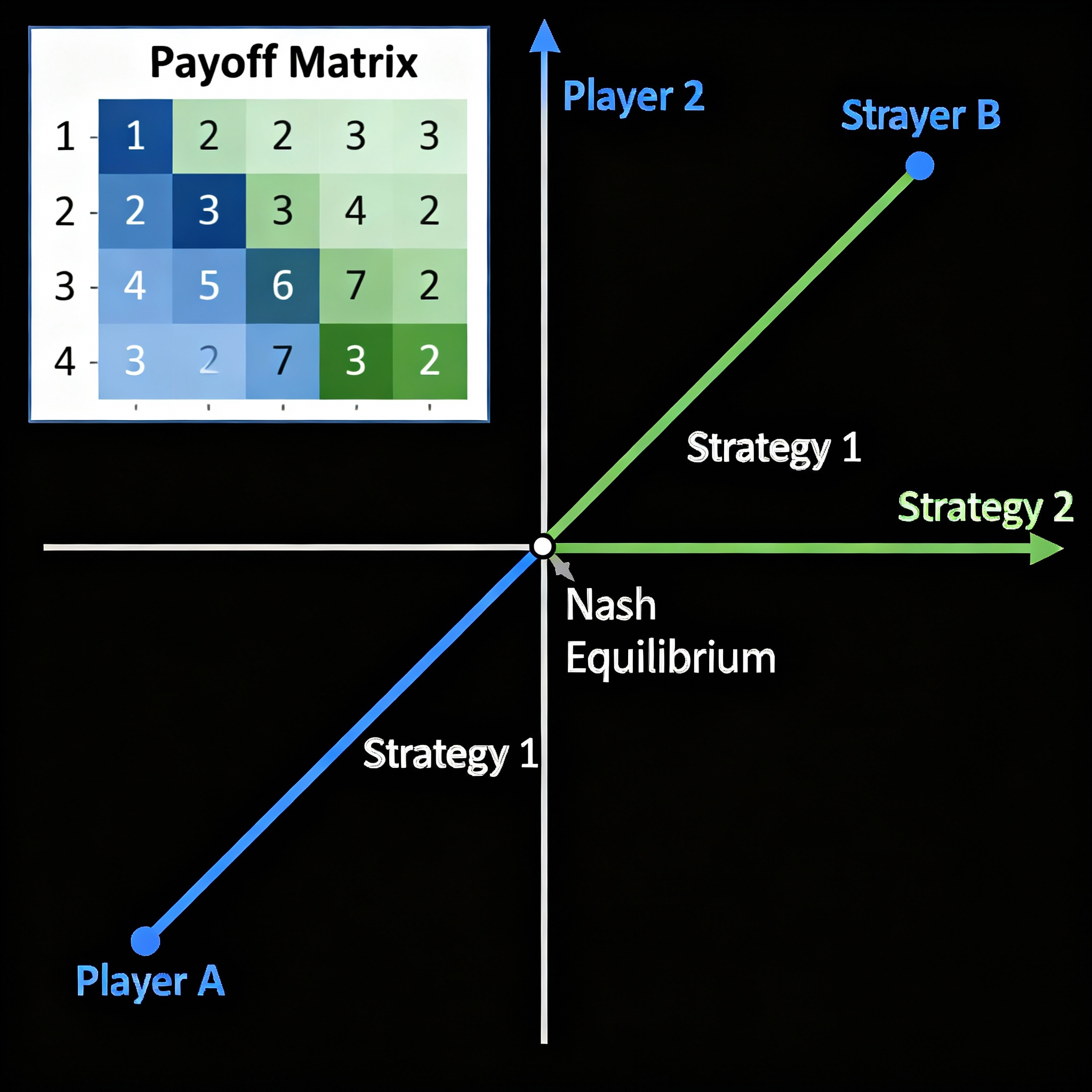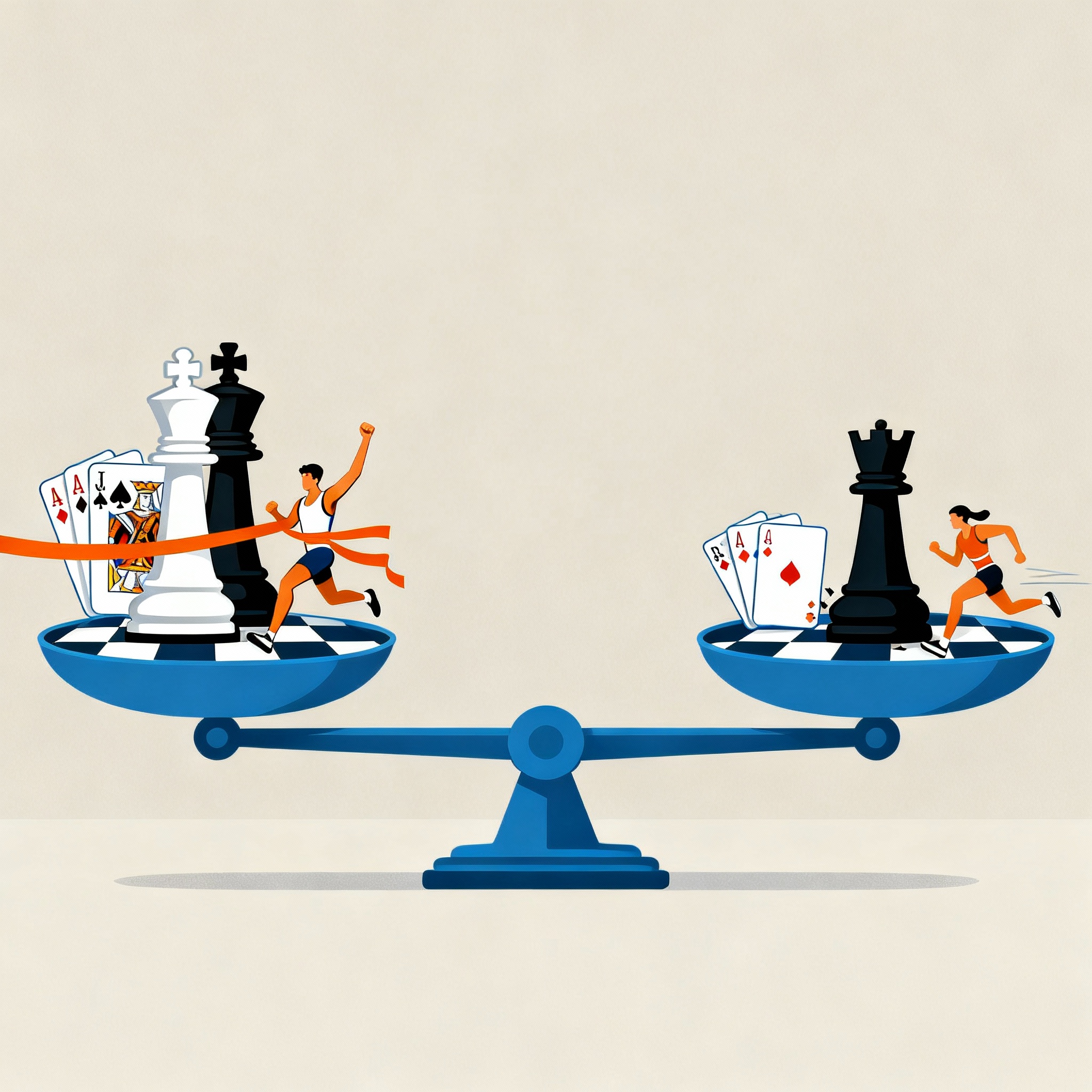Game theory is the mathematics of strategy. It explores how people make decisions in situations where the outcome depends not only on their own choices but also on the choices of others. From business and politics to everyday life, game theory helps us understand competition, cooperation, and how to get the best results when everyone has their own interests.

Basic game theory diagram illustrating player decision-making and outcomes
What Is a Game in Game Theory?
In game theory, a “game” isn’t always a board game or sport. Instead, it’s any situation with:
- Players (decision makers)
- Strategies (possible choices for each player)
- Payoffs (outcomes/rewards for each combination of choices)
If you ever had to split a pizza with friends, bargain at a market, or decide which route to take in traffic based on what you think others will do—you’ve used game theory.
The Famous Prisoner’s Dilemma
The Prisoner’s Dilemma is a classic game theory scenario. Imagine two suspects are arrested and kept in separate cells. Each can either stay silent (cooperate) or betray the other (defect). The police don’t have enough evidence to convict both, so they offer a deal.
Possible outcomes:
- If both stay silent: minor punishment for both.
- If one betrays and the other is silent: the betrayer goes free, the silent one gets a tough sentence.
- If both betray: both get a moderate sentence.
The “dilemma” is that even though cooperation is best for both, the logical choice (defecting) can lead to worse results for each.

Classic prisoner’s dilemma scenario showing strategic decision-making
Example:
Two companies launching similar products can choose to advertise aggressively (defect) or not (cooperate). If both advertise, profits go down due to high costs. If neither advertises, profits are higher, but if one advertises while the other doesn’t, the advertiser wins big and the other loses.
Nash Equilibrium: When No One Wants to Change
Nash Equilibrium is a situation where each player’s strategy is the best response to others’ choices. That means no one can improve their own outcome by changing their decision alone.

Nash equilibrium concept showing strategic balance in game theory
Example:
In a traffic jam, if everyone chooses the fastest route, it becomes congested and isn’t the fastest anymore. Nash equilibrium happens when drivers split among different routes so no one can save time by switching.
Zero-Sum Games: Winner Takes All
A zero-sum game is where one person’s gain is exactly another’s loss. The total “pie” stays the same; you can only win at someone else’s expense.

Zero-sum games showing competitive scenarios where one player’s gain equals another’s loss
Examples:
- Chess and poker: If you win, another loses.
- Sealed bidding on contracts: One company wins the contract, others get nothing.
Cooperative vs. Non-Cooperative Games
Not all games are cutthroat! Some rely on cooperation to get the best results.

Comparison between cooperative and non-cooperative game strategies
- Non-Cooperative Games: Every player acts independently (e.g., companies in a price war).
- Cooperative Games: Players can form alliances to share the rewards (e.g., companies forming a joint venture to share profits and risks).
Real-Life Applications of Game Theory
Game theory isn’t just for economists or mathematicians. You probably use it more than you realize:

Real-life applications of game theory in everyday situations
Traffic: Choosing a driving route by estimating what others will do, hoping to beat congestion.
Negotiation: Whether it’s discussing a salary, making a business deal, or haggling at a market, understanding likely responses helps you reach a better outcome.
Shopping: Waiting for sales, predicting if and when a product price will drop.
Group Projects: Hoping everyone does their part, but worried some might “free-ride” on others’ work.
Business: Companies making decisions about pricing, product launches, or marketing based on competitors’ potential moves.
Social Situations: Deciding to contribute in a group or rely on others, such as organizing a party or contributing to community projects.
Conclusion
Game theory gives us powerful tools to understand and predict strategic interactions—whether that’s negotiating, playing sports, making business moves, or just everyday decision-making. By identifying players, strategies, and payoffs, you can often predict outcomes and make better choices in all areas of your life.
With a basic grasp of game theory concepts like the Prisoner’s Dilemma, Nash equilibrium, and zero-sum or cooperative games, anyone can start to see patterns in daily life—and maybe even find smarter ways to “play the game.”
Leave a Reply